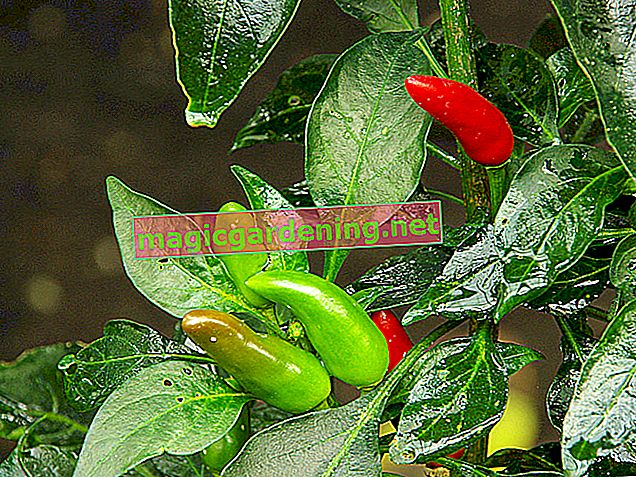
How to prepare peppers for winter quarters
After the last pepper harvest, the plants must move into their winter quarters in good time before the first frost. Hibernating peppers is easy - provided that the peppers are cared for and placed in the right place. Before the peppers come into the house, they should be prepared as follows:
- thoroughly rid of pests such as aphids or spider mites
- Dispose of sick or damaged plants
- Water and water plants sufficiently again
also read
- This is how green peppers turn red - proven methods of ripening peppers
- Growing and caring for peppers in the greenhouse
- The correct planting distance for peppers
What are the options for wintering?
Bright, cool and frost-free rooms are the best winter quarters for peppers. The plant rests at an average temperature of 10 degrees. Watering is reduced to 2 times a week and fertilization is not necessary.
In a room with a normal temperature at 20 ° degrees, the peppers will continue to grow, bloom and form fruits. Therefore, water weekly and fertilize a little once a month.
Proper care when peppers overwinter
In principle, all types of pepper can be overwintered. The advantage: in the second year, peppers are often more productive and less sensitive. The following rules apply to winter care:
- Pests and diseases
- the correct cutting and pruning
- to water
During the winter, peppers are susceptible to pests such as spider mites, aphids, and diseases. This is additionally supported by too dry heating air and wet earth. Check plants regularly and water them only moderately.
Properly cutting peppers right into the woody areas creates space, promotes branching and new plant shoots. The more pruning, the fewer leaves. Therefore only water a little. A lot of leaf mass supports winter photosynthesis. This means that there is an increased need for water and nutrients.
Winter watering: the darker and cooler the winter paprika location, the less water. Avoid waterlogging at all costs and always allow the soil to dry slightly.
When winter goes and spring comes
From February you can slowly prepare the peppers for the new open-air summer. To do this, move the peppers into a new pot. Note that the diameter and depth are only slightly larger. Otherwise the plant will use too much force on the new root formation. Keep the substrate a little more humid and slowly pour more. Fertilize more often from mid-May. If everything goes well, you will harvest significantly more peppers in the second year.
Tips & Tricks
Make sure there is sufficient humidity in the winter quarters. Bell peppers do not tolerate dry air. Possibly set up a humidifier and spray plants with distilled water.








